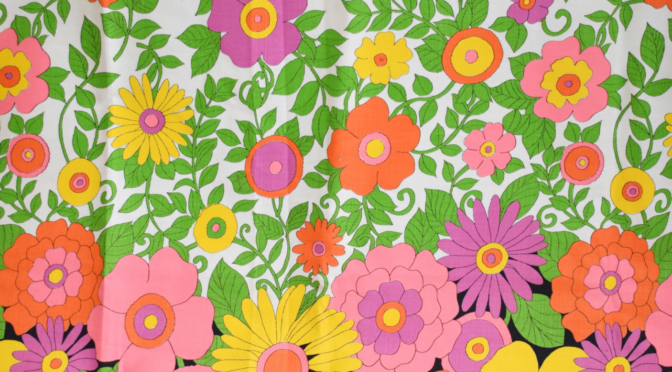
by Gwyn Conaway
“Flowers are better than bullets.”
This has been said upon occasion, especially over the last decade, but in bygone eras as well. War-weary Americans and English poets alike have waxed poetic over the familiar adage. These days, however, the sentiment is laced with gunpowder.
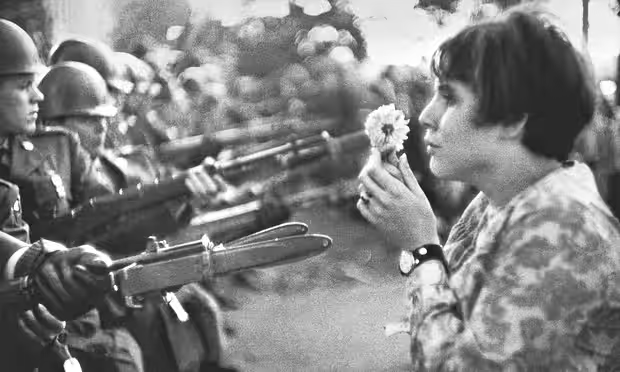
Jan Rose Kasmir put flowers in guns pointed at her during a protest at the Pentagon in 1967 at which she wore a cotton shift decorated in daisies. She recalls being saddened by how young the soldiers were. These were men she could have been on a date with, if only there weren't a philosophical trench separating them.
Allison Krause also said this as she put a flower in an Ohio National Guardsman's gun at Kent State University on the weekend of May 4th, 1970, less than two months ago. Later, the Ohio National Guard opened fire on student protestors, wounding nine and killing four, including Miss Krause. Since then, students nationwide have protested in the name of peace and a growing distrust of the government's motivations to use deadly force, both at home and around the world.
Of course, the photograph of Mary Ann Vecchio, just 14 years old, will live in infamy for generations. The chilling scene still haunts me, the young girl wailing over the body of a fallen boy with shaggy hair and a pair of flat-soled sneakers.
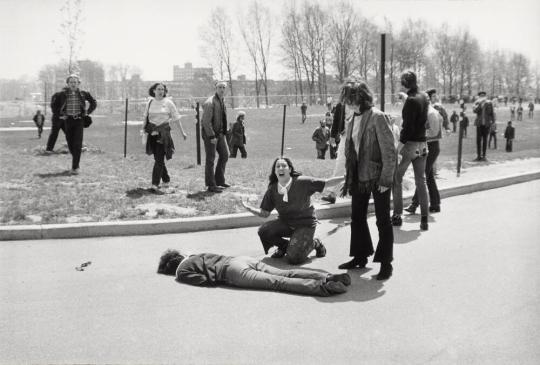
Mary Ann Vecchio, 14, cries over the body of Jeffrey Miller, one of the four victims during the Kent State Massacre on May 4, 1970.
And just four days later, during a New York City protest honoring that boy in his sneakers and the other students that died, a band of several hundred laborers and office workers also took to the streets. The Hard Hat Riot was a culture clash that illustrates the divide in America.
Long hair versus trim cuts. Band shirts versus button-downs. Bell bottoms versus slacks. This division is more than a generational or political gap. Our country is splitting down the seams of ideology. The Hippies had been a countercultural movement in the sixties, but I am certain that events like these will transform their radical ideals and fashions into the mainstream.
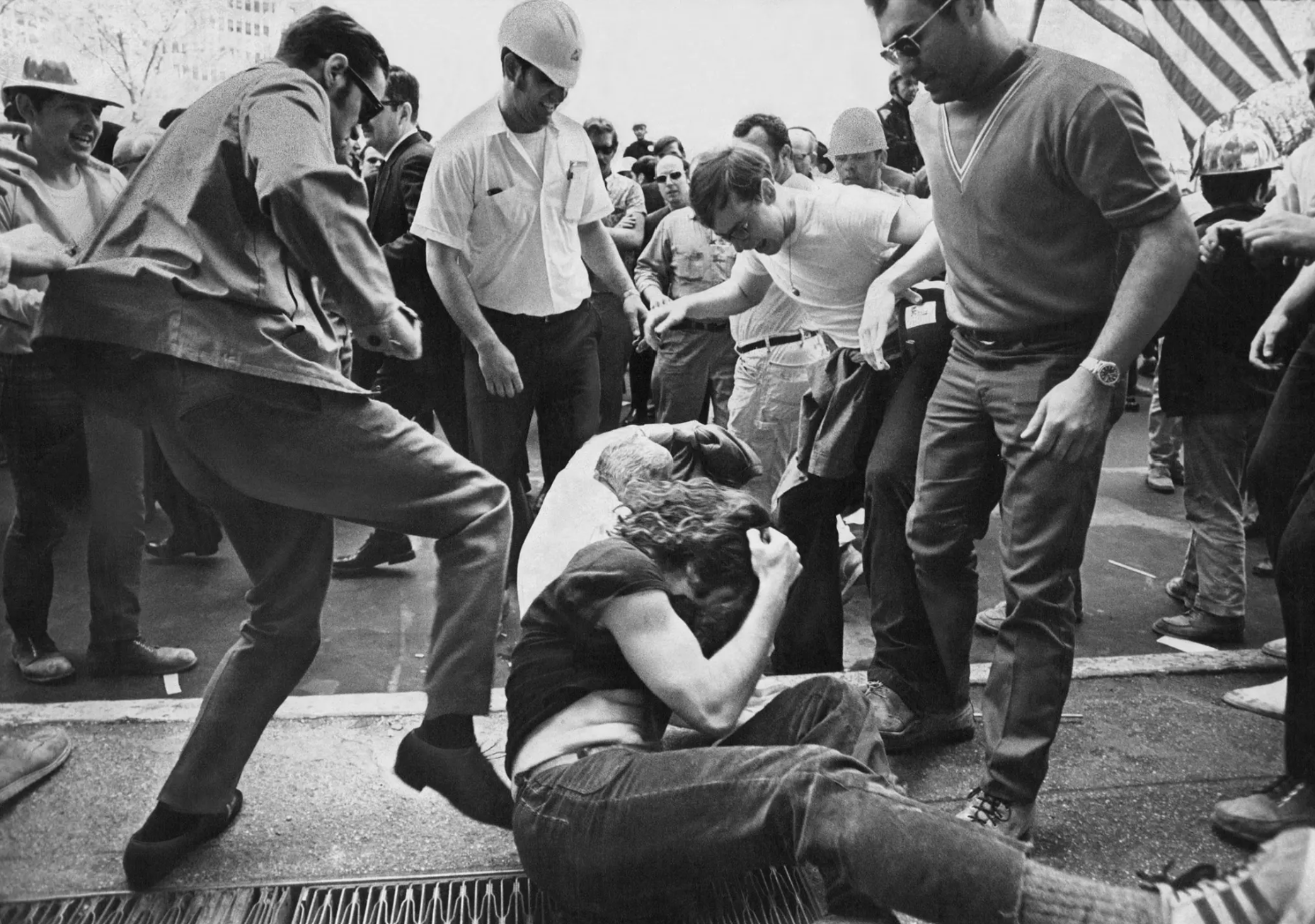
Though people on opposite sides of the picket line see dramatically different messages when they judge the fashion identities of these men, the message couldn't be clearer. The rift in America will have a lasting impact.
Since the Vietnam War protests began in 1965, “Flower Power” has been a consistent message for the movement, expressed in wacky, beautiful, creative, and bold ways. Daisies, a flower ubiquitous across the nation in gardens and the wild, is the flower of choice with its pure white petals and plush center. The term signals a commitment to pacifism and peaceful protest but is transforming before our eyes.
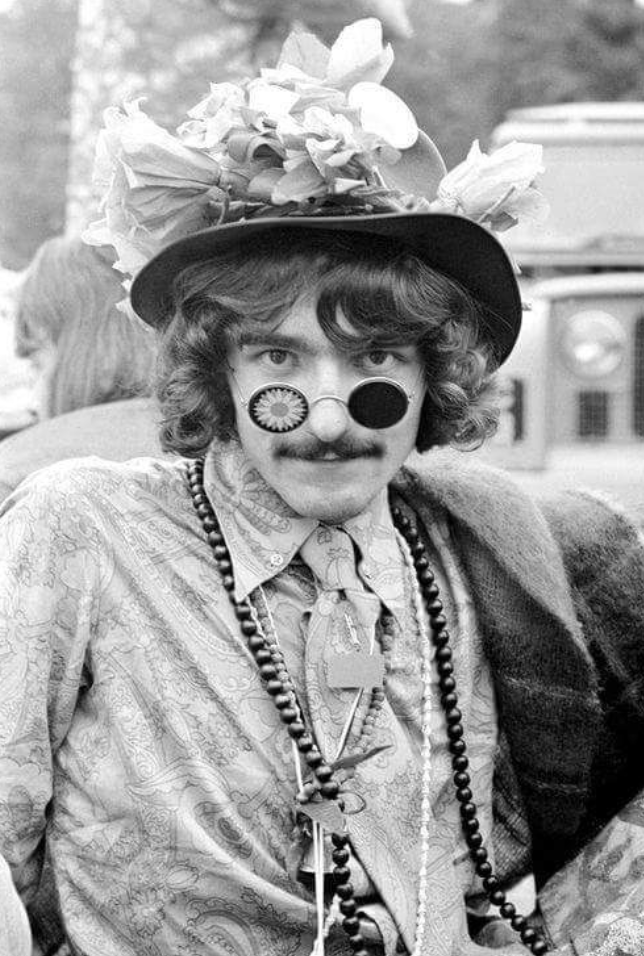
A British man wearing a provocative flowerpot hat decorated in silk flowers with a pair of spectacles, one of which is patterned as a daisy. He likely wore this to a festival in 1967.
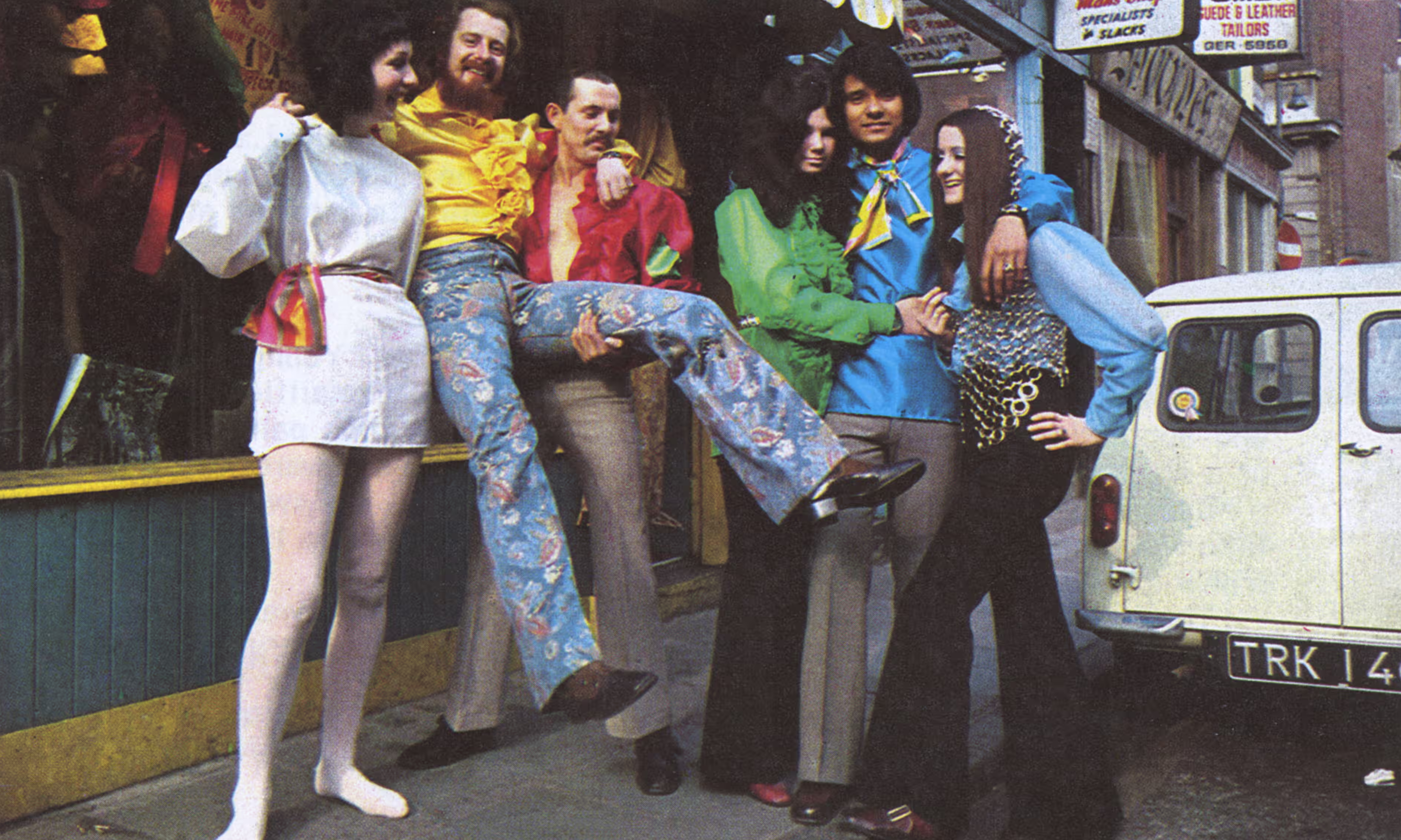
Early in the movement, one was most likely to see floral designs on Hippie men who had to alter their own bellbottoms, which were not sold in stores. These early trousers were decorated with tie silks, floral embroidery, and paint, often made from old farm jeans bought from a consignment shop. This man on Carnaby Street in London, 1966, has decorated his bellbottoms in paisley patterns and flowers.
“Flower Power” is such a recognizable philosophy of this generation that it has outgrown the Hippie Movement and is now seeping into the humdrum of daily life. Cotton textiles used for daytime dress and interior soft goods such as curtains, upholstery, and tablecloths, are beginning to adopt the symbol. Similar flowers are used in children’s entertainment, in school supplies and music, in graphic design.
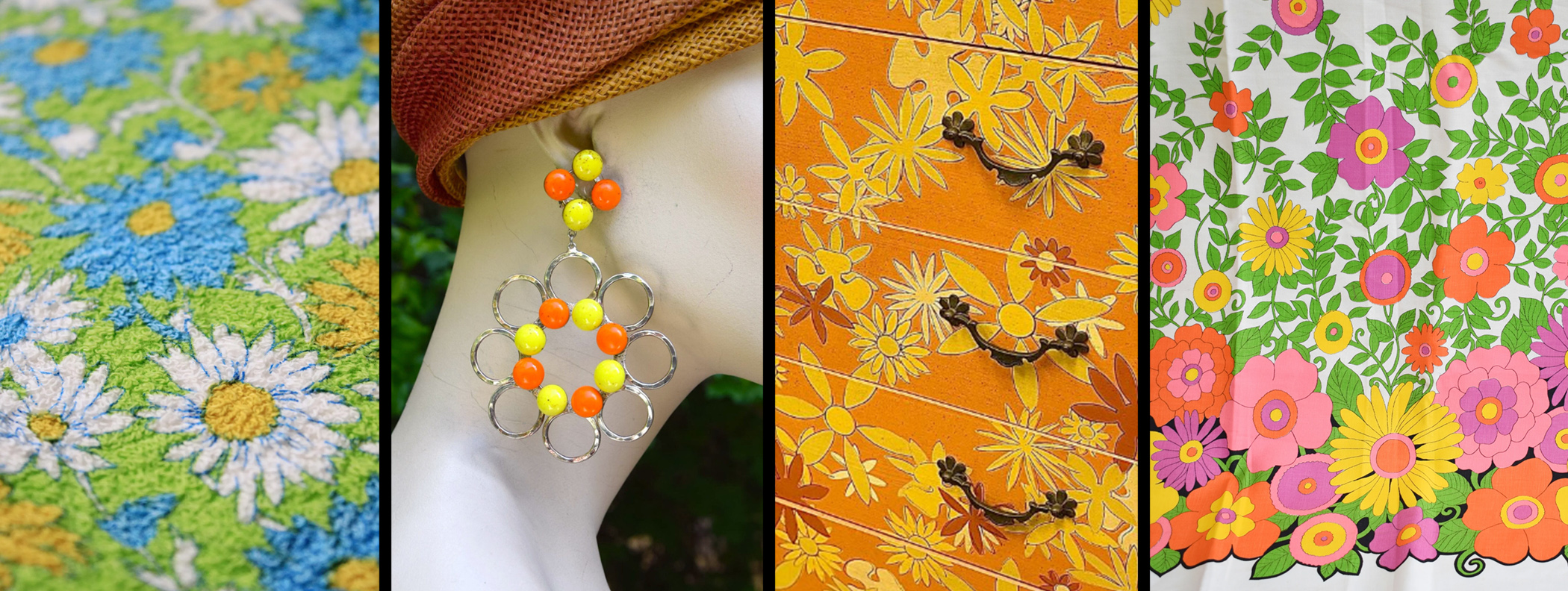
From left to right: daisy terry cloth, Gautier's Flower Power earrings, a chest of drawers from Duxel's Whimsy line, and a block-inked cotton, 1970.
Anyone with sympathy for the students at Kent State will view Flower Power as a positive message of youth and utopia, regardless if they were ever associated with the Hippie Movement’s more extreme views. The legend of Allison Krause’s final acts have certainly solidified its place in our culture. As Hippies and students start their families, they’ll begin to decorate their suburban lives and children accordingly. Last summer, for example, Biba introduced the “Liberty dress” for children, which is a sweet cotton dress in sunshine yellow and sky blue, covered in meadow flowers. Even brands such as Wrangler have been dabbling with Flower Power, making it marketable to the mainstream.
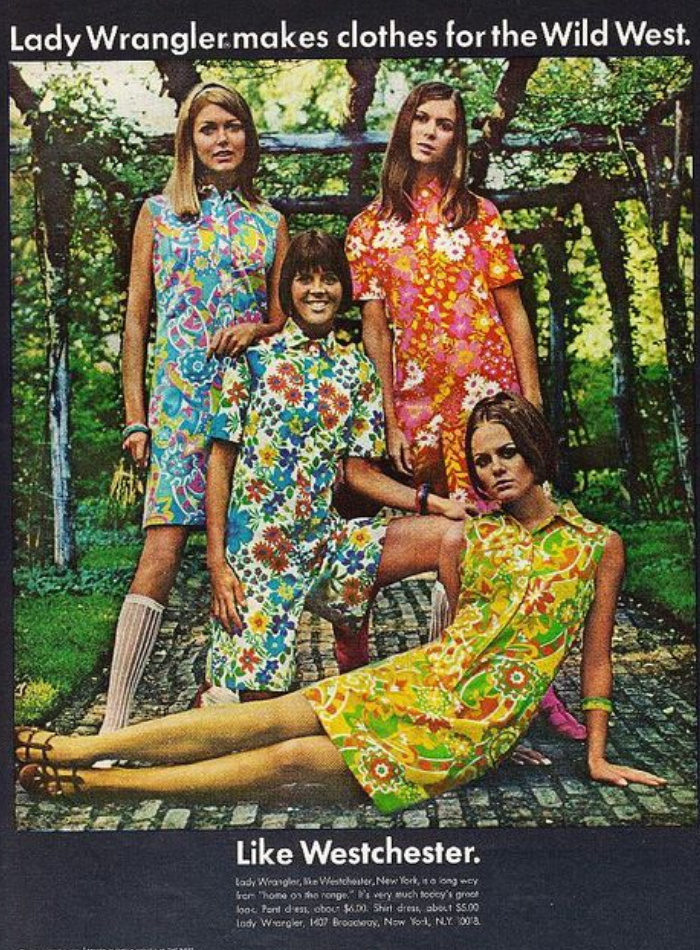
Wrangler jumped on the bandwagon in 1968. I find this particularly interesting, considering that many American Hippies made their bellbottoms out of thrifted workman's jeans.
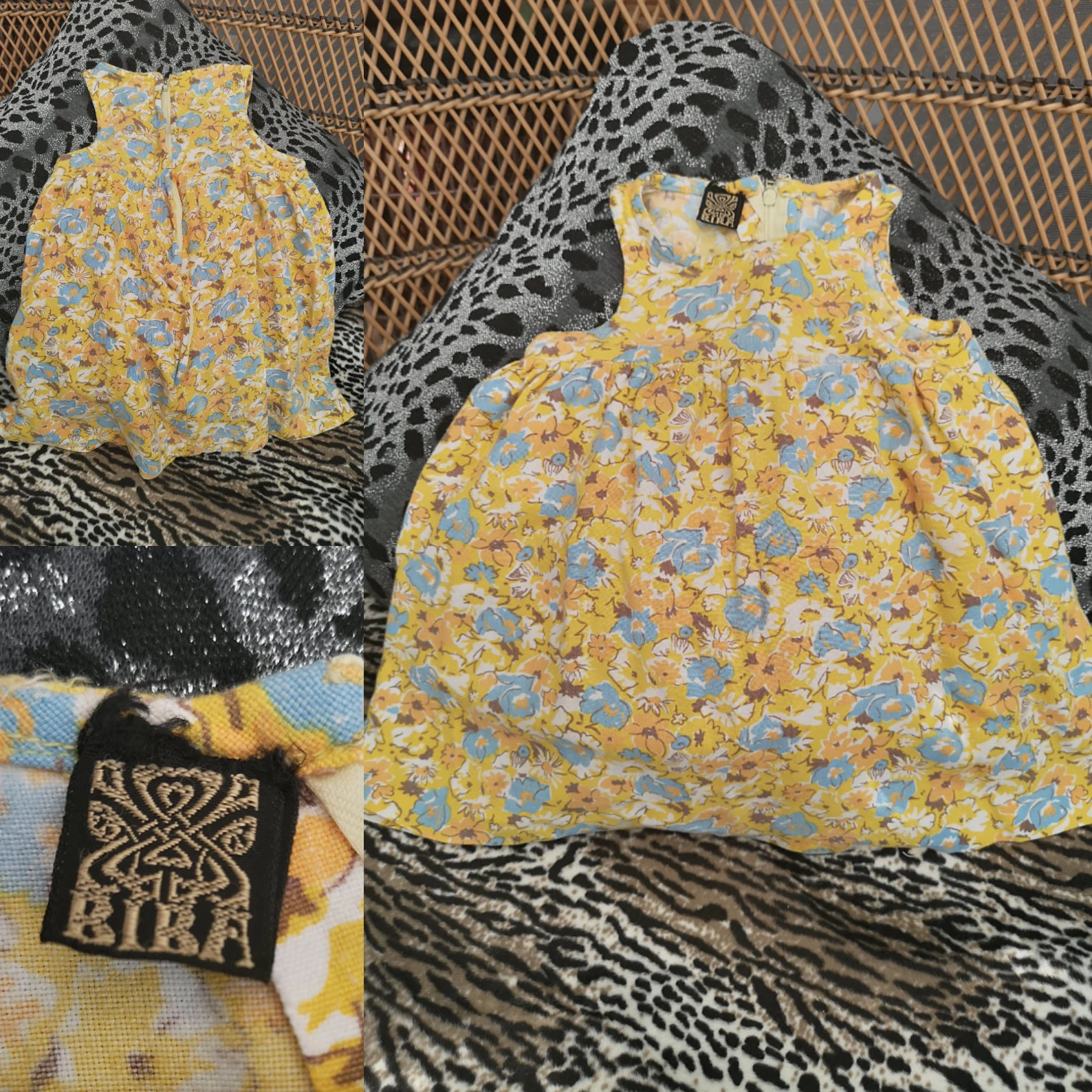
The "Liberty" dress from Biba, 1969.
This sort of visual drift is akin to anthimeria, in which a specific proper pronoun becomes a verb. It is a sign that the brand–in this case the protest philosophy of Flower Power–is so recognizable to young workers, designers, and students that it has become a defining philosophy in mainstream life.
But this also means that Flower Power could lose its power in the years to come. Without being associated specifically with protest culture, the daisy may take on new, more diluted meanings. Perhaps it will come to represent the homemaker or some failure of the Hippie Movement. Maybe the Black Panthers Movement for Self Defense will rise in prominence as a more militant, defensive form of activism. No matter what, Flower Power has become inseparable from American culture.
Whether it divides us or unites us in the end is still unknowable.
[New to the Journey? Read this for a brief introduction!]

